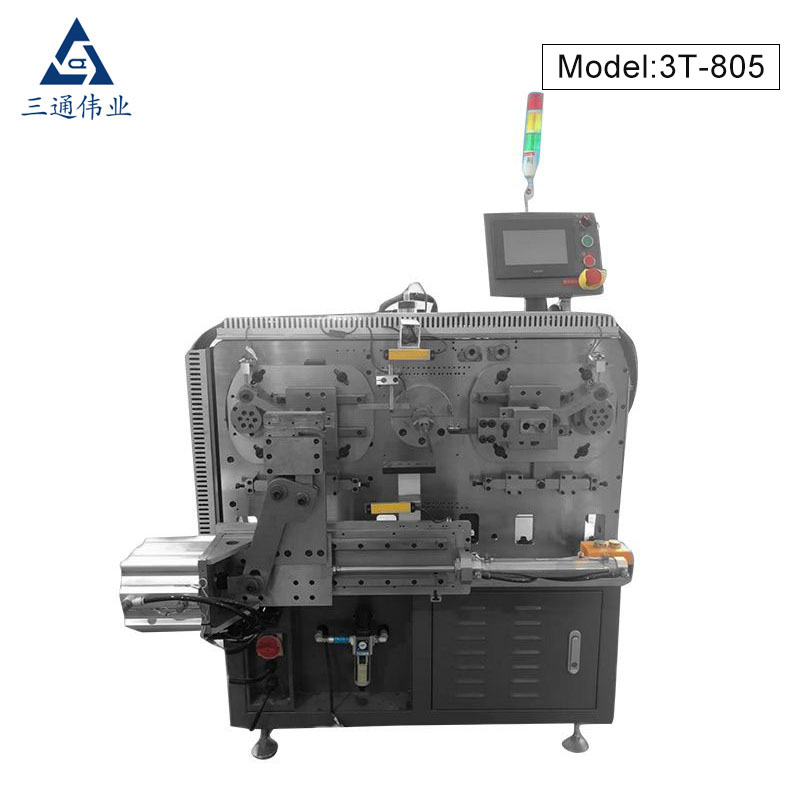- English
- Español
- Português
- русский
- Français
- 日本語
- Deutsch
- tiếng Việt
- Italiano
- Nederlands
- ภาษาไทย
- Polski
- 한국어
- Svenska
- magyar
- Malay
- বাংলা ভাষার
- Dansk
- Suomi
- हिन्दी
- Pilipino
- Türkçe
- Gaeilge
- العربية
- Indonesia
- Norsk
- تمل
- český
- ελληνικά
- український
- Javanese
- فارسی
- தமிழ்
- తెలుగు
- नेपाली
- Burmese
- български
- ລາວ
- Latine
- Қазақша
- Euskal
- Azərbaycan
- Slovenský jazyk
- Македонски
- Lietuvos
- Eesti Keel
- Română
- Slovenski
How Does a Winding Machine Improve Production Efficiency?
2025-10-16
A winding machine is a critical piece of equipment in modern manufacturing, widely used in industries such as electrical, textile, and cable production. Designed to automate the process of winding wires, threads, or filaments onto spools, bobbins, or reels, the winding machine enhances production speed, consistency, and precision.
What Is a Winding Machine and What Are Its Key Features?
Definition and Applications
A winding machine is an automated device that wraps materials, typically wires, threads, or strips, around a core to form coils or reels. It is essential in:
-
Electric motor manufacturing
-
Transformer coil production
-
Cable and wire industries
-
Textile manufacturing
Key Features and Technical Specifications
| Parameter | Specification / Description |
|---|---|
| Type | Automatic, semi-automatic, or manual winding machines |
| Voltage | 220V/380V/415V (depending on industrial standards) |
| Speed Range | 10–2000 RPM, adjustable based on material type |
| Winding Diameter Range | 50mm–500mm |
| Tension Control | Digital or mechanical tensioning systems to prevent material damage |
| Control System | PLC control with touchscreen interface for precise operation |
| Material Compatibility | Copper, aluminum, textile threads, optical fibers |
| Safety Features | Emergency stop, overload protection, and automatic fault detection |
| Accuracy | ±0.1 mm in winding position and length measurement |
| Noise Level | ≤70 dB, suitable for industrial settings |
These features ensure high reliability, consistent coil quality, and minimal human error, which are crucial for industries where precision is non-negotiable.
Why This Matters
A winding machine reduces manual labor, increases production output, and ensures product consistency, which directly impacts operational efficiency and overall profitability.
Why Are Winding Machines Indispensable in Modern Manufacturing?
Efficiency and Productivity Gains
Winding machines significantly accelerate production processes. Manual winding can be slow, prone to errors, and physically demanding. Automated winding machines provide:
-
Consistent winding tension: Prevents coil deformation or damage
-
Faster production cycles: Reduces downtime between batches
-
Labor cost reduction: Fewer workers needed for repetitive winding tasks
Quality Control Advantages
Modern winding machines come with integrated monitoring systems. Features such as automatic length measurement, tension regulation, and defect detection improve product quality by reducing the risk of material waste or faulty coils.
Scalability for Industrial Growth
Investing in advanced winding machines allows manufacturers to scale production without proportionally increasing labor costs. This is especially important in industries like electrical equipment manufacturing, where demand can fluctuate rapidly.
How Modern Technology Enhances Winding Machine Performance
-
PLC and touchscreen interfaces: Allow operators to set precise parameters for winding speed, tension, and coil count
-
Servo motor integration: Enables smooth acceleration and deceleration to avoid material snapping
-
Programmable memory functions: Store multiple winding programs for different product types, reducing setup time
-
Remote monitoring: Some machines offer IoT-enabled controls for real-time performance tracking
How to Choose the Right Winding Machine?
Assess Production Requirements
When selecting a winding machine, manufacturers should consider:
-
Material type: Copper wire, textile thread, or specialty filaments
-
Production volume: Small-batch vs. mass production
-
Precision requirements: Coil dimensions, winding tension, and repeatability
Installation and Maintenance Considerations
-
Space and layout: Ensure sufficient floor space and accessibility
-
Power supply compatibility: Voltage and current requirements for your facility
-
Maintenance support: Availability of spare parts and service teams
Common Questions About Winding Machines
Q1: What maintenance practices ensure the longest lifespan of a winding machine?
A1: Regular lubrication of moving parts, timely replacement of worn-out components, periodic calibration of tension controls, and keeping the machine clean from dust or debris ensures consistent performance and extends machine life.
Q2: Can winding machines handle different wire gauges and materials in the same production line?
A2: Yes. Modern machines with adjustable tension control and programmable settings can handle multiple wire gauges and materials. Operators can switch between programs for different specifications without major reconfiguration.
Emerging Trends
-
Integration with Industry 4.0 for predictive maintenance
-
Smart winding machines with automated error correction
-
Energy-efficient models that reduce operational costs
Future Outlook and Brand Excellence
The Future of Winding Machines
The next generation of winding machines is set to be smarter, faster, and more precise. With AI-assisted monitoring, machines will be able to predict material fatigue, detect coil inconsistencies in real-time, and even optimize winding speed based on material characteristics.
Why Santong Winding Machines Stand Out
Santong offers a range of winding machines known for durability, precision, and advanced automation capabilities. By combining robust mechanical design with intelligent controls, Santong ensures high-quality coil production and reduced operational costs.
Manufacturers seeking reliable winding solutions can explore Santong machines for enhanced productivity and quality assurance. For inquiries, customization, or technical support, contact us team directly to discuss tailored solutions that fit production requirements.




